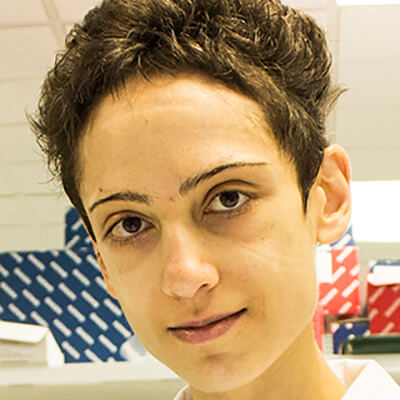Harnessing Exercise to Protect the Optic Nerve

Principal Investigator
Vicki Chrysostomou, PhD
Centre for Eye Research Australia (Australia)
Melbourne, Australia
About the Research Project
Program
Award Type
Standard
Award Amount
$99,705
Active Dates
July 01, 2015 - June 30, 2017
Grant ID
G2015125
Co-Principal Investigator(s)
Jonathan Crowston, MBBS, FRANZCO, FRCOphth, PhD, The University of Sydney
Goals
Exercise is a positive lifestyle choice that reduces the risk for a wide range of diseases and conditions. Yet, the role of exercise in eye health and eye disease is largely unknown. In this project we will investigate how exercise may benefit the optic nerve, the structure joining the eye to the brain, which is primarily affected in the eye disease glaucoma. The information gained from this work will contribute to the development of new approaches for preventing or delaying optic nerve damage and subsequent vision loss in glaucoma.
Summary
The goal of our project is to understand how exercise can protect the aged optic nerve and to explore if physical activity may be used as a new approach for preventing or delaying optic nerve damage and subsequent vision loss in glaucoma patients.
Previous research from our laboratory discovered that daily exercise can robustly protect optic nerves of aged mice against injury. This suggests that the benefits of physical activity extend to the visual system and make a compelling case for further investigation of exercise as a means of protecting against optic nerve injury, dysfunction and degeneration. Specifically, several key questions remain, which we are addressing in three experimental aims.
In our first aim, we are testing the effect of forced versus voluntary exercise regimens on the prevention of optic nerve injury. Simultaneously, we are investigating if exercise can be used as both a preventative measure (applied before injury) and a therapeutic aid (applied after injury). These experiments will define the characteristics of exercise that facilitate optic nerve protection as more closely related to human exercise programs and conditions.
Although we have previously shown that exercise can protect the aged optic nerve against an acute injury, we do not know if exercise can also protect against chronic stress and degeneration, which is more akin to human disease. Our second aim is therefore to determine whether exercise can protect the aged optic nerve against long-term injury in an experimental mouse model of glaucoma. These experiments will inform on the potential of exercise to protect the optic nerve as more closely related to clinical glaucoma, which is characterized by chronic and progressive degeneration of the optic nerve.
Our final aim is to explore the biological mechanisms that underlie exercise-induced protection of the aged optic nerve. Identifying the nature and source of molecules that mediate exercise-induced protection will be critically important to the development of novel neuroprotective therapies for protecting the aged optic nerve against glaucoma and other degenerative processes.
Exercise is a positive lifestyle choice that reduces the risk for a wide range of diseases and conditions. As a therapy, exercise is cost-effective, non-invasive and safe. Yet, the role of exercise in eye health is largely unknown and exercise is not currently considered a factor for the progression of any major eye disease. This makes our current research unique, as we are proposing that exercise can be used as a preventative measure and/or therapeutic aid for an eye disease (glaucoma). Furthermore, our experiments will reveal new information about the effects of exercise on the eye and potential underlying mechanisms.
All current glaucoma treatments are directed at lowering eye pressure but this approach fails to prevent vision loss in many individuals. Novel therapies that render the aged optic nerve more resistant to injury stand to transform glaucoma management. The information gained from our study will contribute to the development of new approaches for preventing or delaying optic nerve damage and subsequent vision loss in glaucoma.
Related Grants
National Glaucoma Research
Human Retinal Regeneration to Cure Glaucoma
Active Dates
July 01, 2025 - June 30, 2027

Principal Investigator
Karl Wahlin, PhD
Current Organization
University of California, San Diego
National Glaucoma Research
Mitochondria in Retinal Ganglion Cells
Active Dates
July 01, 2025 - June 30, 2027

Principal Investigator
Rob Nickells, PhD
Current Organization
University of Wisconsin-Madison
National Glaucoma Research
Role of a Key Gene, Angptl7, in Steroid-Induced Glaucoma
Active Dates
July 01, 2025 - June 30, 2027

Principal Investigator
W. Daniel Stamer, PhD
Current Organization
Duke University



